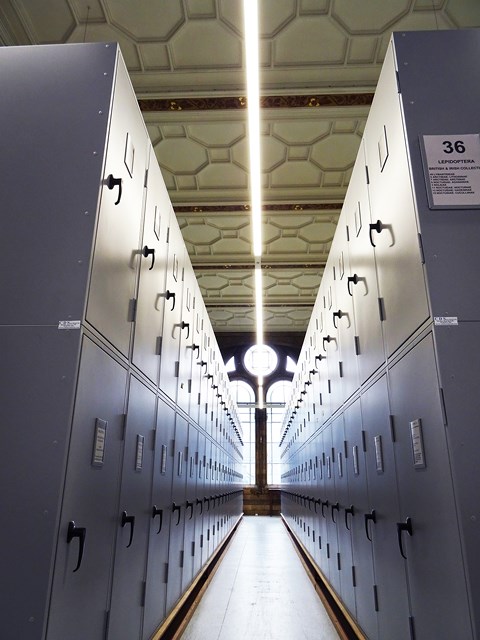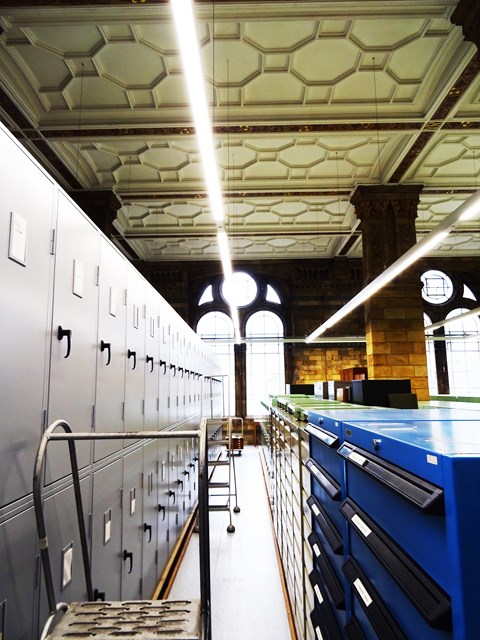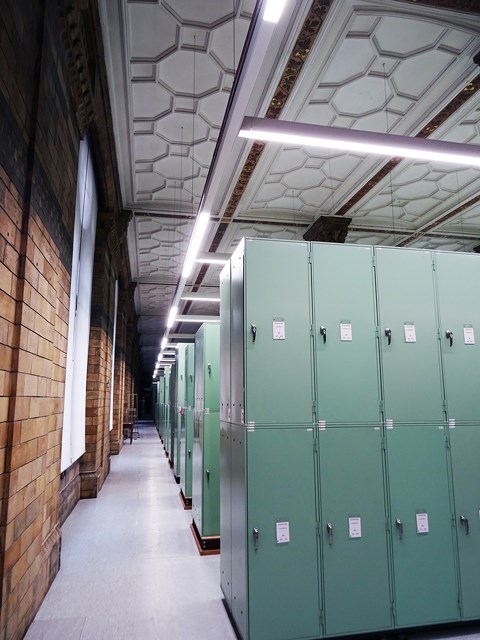Brief
Natural History Museum ‘opened up the space’ by removing a large, mezzanine floor, highlighting a 200-year-old ceiling and wall structure. Originally, the museum was not looking for any up-light component, but we suggested this would highlight a wonderful ceiling and historic piece of architecture. The sentiment was well received and the product type was agreed.
It became apparent that the customer required a bespoke variation of the SLSUD100 product, because options for luminaire fixing points were limited as the building’s ceiling had a small amount of points from which to suspend wires. No extra suspension points could be added because the Natural History Museum is a listed building. The standard luminaire required more light output to achieve the desired up-light effect. Energy saving was of course a factor in the museum’s agreement that spaces should only be lit when researchers entered the area.
Solution
To overcome the issue of limited suspension points, the product design team would design a fixing bracket which would enable the SLIMLUX® 610 range of luminaires to be suspended from considerably less suspension points than would normally be required. New Osram boards were installed to provide the extra light output required to achieve the desired up-light effect. A 68-metre run and several 12-metre runs of the SLSUD100 linear, up/down-light, suspended luminaires were to be installed. The down-light aspect of the luminaires would illuminate work areas for staff while the up-light component would highlight the ceiling.
Lighting controls in the shape of presence and daylight sensors would ensure that light output was dictated by requirement only. The highly efficient luminaires would only consume energy if there was insufficient daylight available or if a researcher entered a work area. A through wiring plug and play solution would be incorporated to reduce the install time for the contractor, as a quick install was a requirement.
Result
An unobtrusive, modern lighting solution is now installed in the world-renowned Origin of Species department. Researchers and other museum staff can carry out their work in a well illuminated space without glare. Energy saving will always be maximized as sensors fitted within the luminaires regulate light output required, depending on daylight available or whether a member of staff is present in an area. The historic ceiling was preserved, product was delivered quickly and the plug and play wiring solution enabled the contractor to complete a quick installation.


